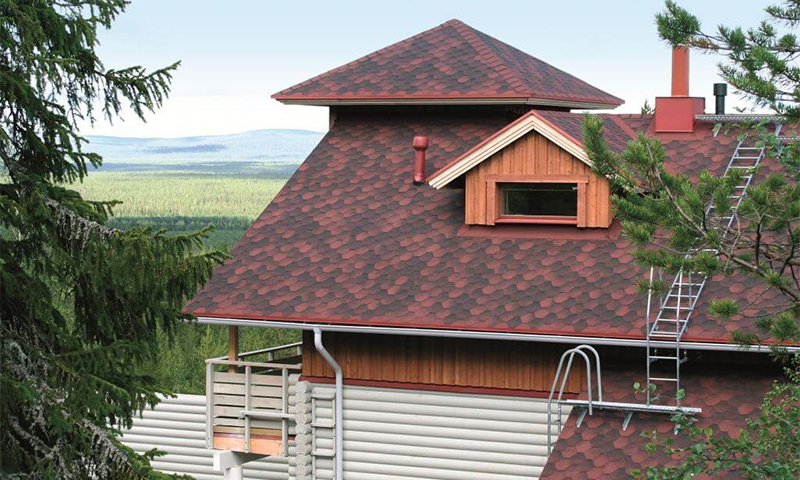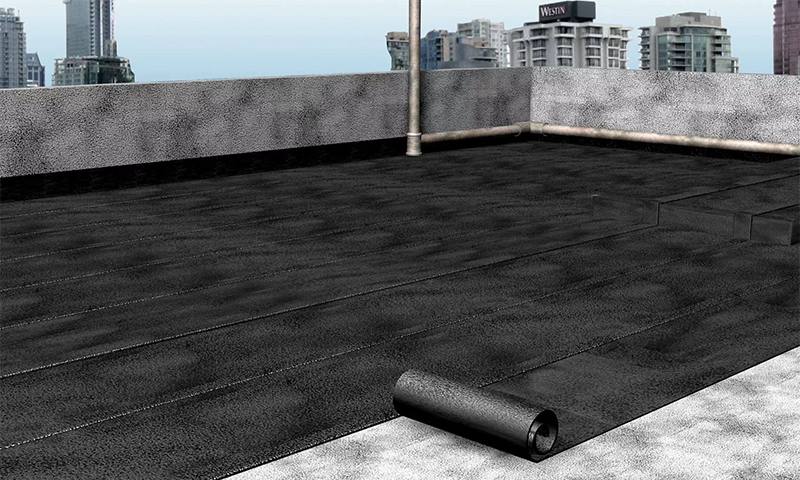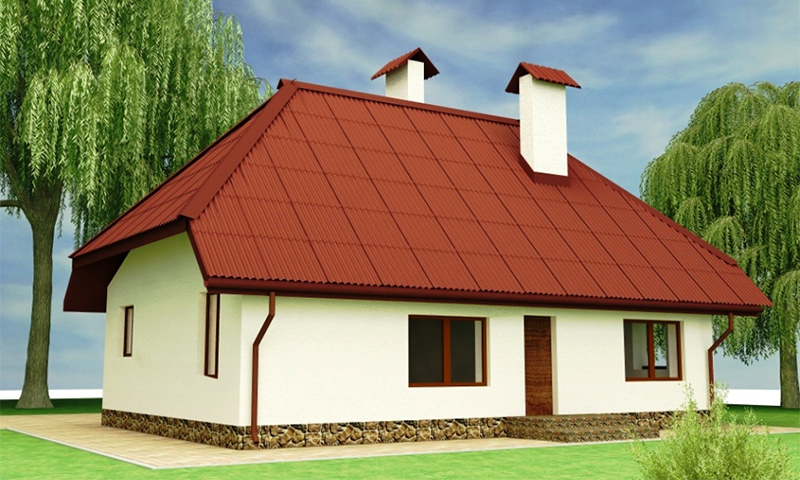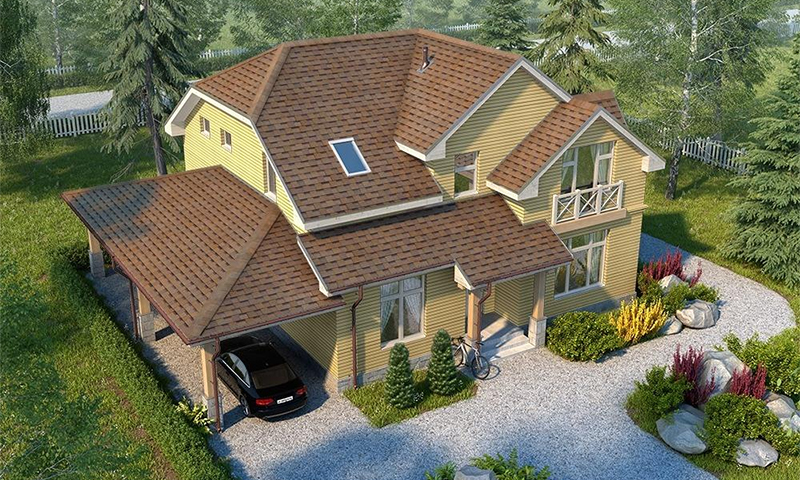Roofing material is one of the most inexpensive and proven materials to create a waterproofing barrier between the lower layers of the building floor and floor surfaces, as well as between the roof and attic rooms. It is made by impregnating cardboard with soft bitumens obtained from petroleum products. Then add the upper and lower layers of coating bitumen. Some models are supplied with powders to increase strength and abrasion resistance. From the rating of the best roofing material, it will be possible to see which types of goods are popular for finishing the roof, creating floors between floors, waterproofing basements and cellars.
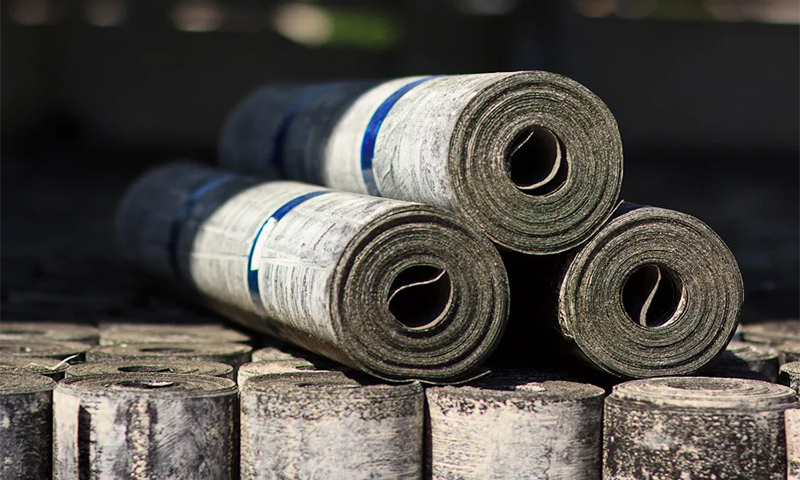
The best ruberoid RCP
The abbreviation of this product makes it clear that the roofing material can be used to create both the lower and upper layers of the roof.
The average thickness of the base and thick bitumen impregnation, as well as topping of fine dust allowed to use it as a temporary roof for commercial and technical buildings.
TechnoNIKOL RKP-350 - for temporary seasonal roofing

This is the best roofing material for arranging a temporary roof on a construction site, where you want to protect materials from the weather, when you can not lay a full roof, but the precipitation interferes with work and spoil the objects inside.
Such an insulator is produced in a golden wrapping with a blue ornament and inscriptions of the name of the Russian manufacturer. The roll can be 10 or 15 meters.
The bituminous surface is covered with fine dusting, which increases the strength of the coating and allows it to withstand the wind and a small layer of snow. After the cold season, it is dismantled and a permanent roof is laid.
Pros:
- plastic material completely repeats the shape of the roof;
- maintains heating to 80 degrees without deformations and loss of properties;
- reinforcing component - cardboard with a density of 350 g / m2 provides adequate strength even for subsequent walking on a temporary roof;
- the coating composition has a mass of 800 g / m2, which provides protection against abrasion;
- with longitudinal stretching the canvas is able to withstand up to 28 kgf;
- during direct contact with water, it absorbs no more than 2% moisture within 24 hours;
- fully protects the building from the ingress of water;
- on both sides of the powdered dressing, which prevents sticking in the roll;
- does not rot;
- does not conduct electricity;
- it is allowed to lay both on liquid mastics and mechanically (to nail to the crate).
Minuses:
- the cost of a roll with a length of 15 meters and a width of 1 m is 440 rubles;
- may crack a bit when laid in strong frost over -40 degrees;
- 26 kg rolls can be tough to roll to the very top of the roof in large quantities.
The best ruberoid RPP
Such material is used solely as a lining, because it has a lower density and strength to resist open loads.
In its manufacture do not use solid bedding, which facilitates laying due to the increased flexibility of the sheet. Due to bitumen inner and outer layers, it performs hydro- and thermal insulation.
KRZ RPP-300 S2 - for a layer between floors of floors

This is the best roofing material to create a barrier between floors, so that moisture and heat are not transferred down or up. Laying it deep under the roofing materials and substrates, and only then assemble the floor covering.
Roofing material is produced in rolls of 15 meters, where the cost starts from 245 rubles. The Ryazan plant allocates its goods with a diagonal inscription with the brand of roofing material and the logo of the roof, emphasizing guaranteed dryness after applying the material.
Pros:
- reasonable price from 245 rubles per roll;
- 300 g / m2 paperboard density provides sufficient strength so that the pressure from the floor materials and walking does not lead to the breakthrough of the base;
- it is allowed to lay a concrete screed on top and install a warm floor, because the bituminous material can withstand temperatures up to 80 degrees;
- light weight of a roll of 16 kg is not difficult for unloading and delivery to the upper floors;
- 53 or 61 rolls can be delivered on the pallet immediately, which is convenient for large objects;
- high flexibility facilitates installation in hard to reach places;
- the mass of the outer layer of bitumen is 350 g / m2, which well isolates the transfer of heat and sounds;
- easy to cut with a knife or large scissors;
- does not absorb water;
- since it does not have topping, over time there is no loss of the outer layer;
- prevents the development of the fungus due to natural oil impregnation.
Minuses:
- the material does not have topping, therefore it can stick together during long-term storage in a roll;
- resistance to longitudinal stretching is less than that of other types and is 22 kgf, therefore accuracy is required during installation.
TechnoNIKOL RPP-300 (O) - for basement waterproofing
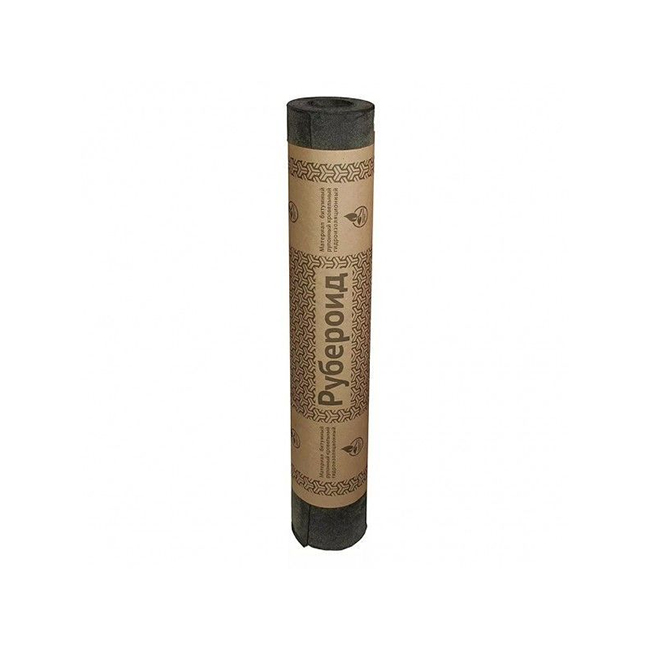
It is the best roofing material to protect the basement and ground floors from the penetration of groundwater, because it has increased strength due to bitumen impregnation.
In view of this, the cost of analogue starts at 49 rubles per square meter. It is produced in rolls, the total weight of which is 19.5 kg, which makes it easy to bring it to the installation site.
Pros:
- no loss of the outer layer during transportation and during installation;
- tolerates high temperatures up to 80 degrees;
- even with direct contact with water, absorption is no more than 2% per day;
- due to its high flexibility, it is easy to turn around and fit in hard-to-reach places;
- the mass of mastic materials on the surface is 500 g / m2, which provides reliable isolation from both moisture and freezing;
- 36 or 47 rolls can be ordered immediately on the pallet;
- the base has a cardboard density of 300 g / m2, which ensures the transfer of pressure from the top of the walk.
Minuses:
- can stick together during long-term storage and temperature changes;
- cost from 35 rubles per m2;
- you can not buy less than one roll for a small area;
- to break the canvas, it is enough to apply an effort of 216 N, which is equivalent to 22 kgf, therefore care is required.
The best rukoidy RKK
This is one of the most expensive types of roofing material due to its durability. The material is intended for the final layers of the roof and has a large sanding dressing, which increases resistance to abrasion. It is applied on all types of flat and sloping roofs as a finishing layer.
RKZ RKK-350 TU with a crumb - for the garage

This is the best roofing material for the roofing of the garage, because its strength is 32 kgf with longitudinal stretching, which will ensure that strong wind gusts are maintained and will not tear off part of the sheet.
The surface is equipped with a large crumb, which increases the strength of the outer layer, so you can safely walk around the garage when you need it. The material is well tolerated by direct sunlight and does not deform even when heated to 80 degrees.
Pros:
- The high density of the cardboard base of 350 g / m2 tolerates vertical loads well;
- 30 rolls can be immediately ordered on the pallet;
- mass of coating material up to 800 g / m2 provides good wear resistance;
- it is difficult to break even intentionally;
- simple laying with fasteners or liquid substances;
- absolutely does not pass water;
- tolerates temperature fluctuations;
- serve up to 7 years.
Minuses:
- cost from 370 rubles per roll with 10 meters;
- roll weight 27 kg.
TechnoNIKOL RKK-400 - for the roof of a high-rise building
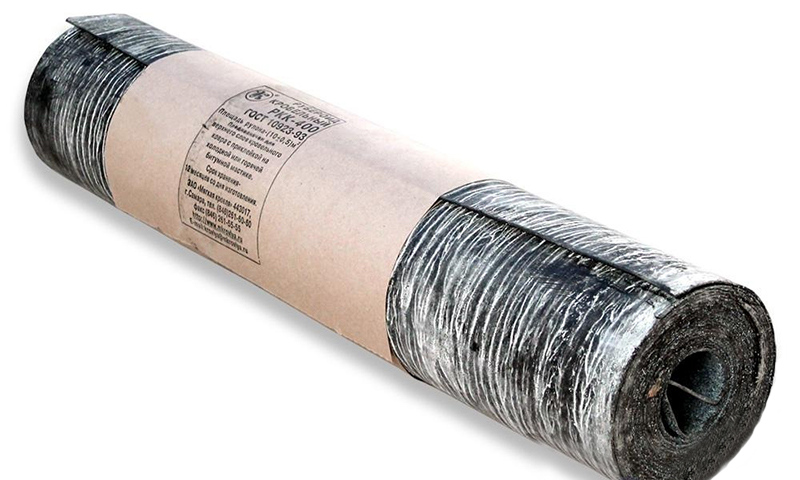
This is the most suitable roofing material for arranging the roof of a high-rise building, which is regularly used by various service companies (Internet, antennas, electricity).
The density of the cardboard base is 400 g / m2, and the mass of the outer layer reaches 800 g / m2, which provides high wear resistance and resists cuts.
Pros:
- to break the canvas you need to make an effort up to 34 kgf;
- high heat resistance, well tolerating summer heat;
- when creating a water pressure of 0.01 kgf / cm2, it is able to withstand its presence for 72 hours with full waterproofness;
- does not form bending cracks;
- large babe outside protects against abrasion.
Minuses:
- during arson, it is capable of sustaining combustion, because it belongs to the G-4 group;
- a mass of 28 kg roll can create difficulties in delivering a large batch to the top;
- with careless transportation there is a loss of coarse powder up to 3 g per sample.
It will be interesting to friends too

